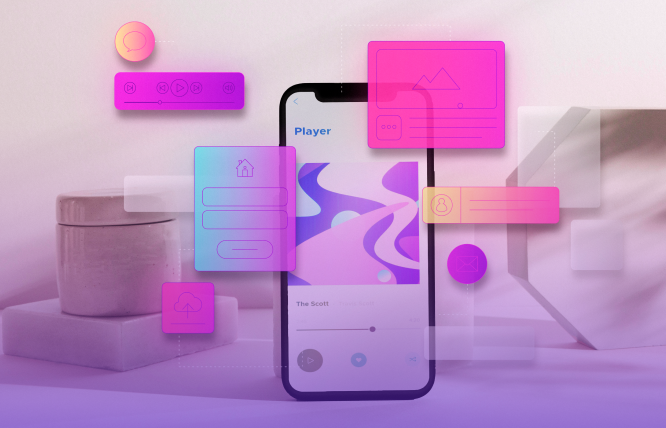Introduction
User experience testing is crucial for creating successful mobile apps. When you evaluate how users interact with your app, your business can better identify and fix usability issues, improve app performance, and enhance user satisfaction. Important UX testing methods include heatmaps, A/B testing, and usability testing.
We depend on applications to perform various tasks, such as managing finances or ordering food. Countless apps appeal to our attention. This is why it is essential to create more than just functional apps that offer a seamless and enjoyable user experience.
This is where user experience testing is seen as an important process that helps ensure an app’s success, as it identifies and addresses usability issues.
| Benefit | Description |
Identifying usability issues | Discover and rectify problems that hinder user experience |
Understanding user needs | Gain insights into user expectations and preferences |
Improving app performance | Optimise app performance and decrease user frustration |
Enhancing user satisfaction | Create apps that delight users and foster loyalty |
Boost app retention and engagement | Encourage long-term user engagement and retention |
UX Testing Methods
Here are today’s most renowned UX testing methods that can be employed to evaluate the user experience effectively:
Usability Testing: This is where users are observed as they interact with the app. It is done to note down any confusion or pain points.
Card Sorting: This technique assists in organising content and information in a manner that is intuitive to the users.
A/B Testing: By comparing different versions of an app, this testing helps determine which feature or design is more effective.
Click Maps and Heatmaps: Visualising user behaviour via click maps and heatmaps helps identify areas of disinterest and interest.
Questionnaires and Surveys: Getting user feedback via questionnaires and surveys provides beneficial insights.
You can also closely monitor the latest trends associated with user experience testing methods.
Integrating UX Testing into the Development Process
To make the most out of UX testing benefits, it should be integrated into the overall development process. Important points here are:
Early-Stage Testing: Perform initial testing to validate the app concept and to identify possible issues.
Iterative Testing: Test and refine the app continuously as it progresses via the development phase.
Post-Launch Testing: Monitor user behaviour and attain valuable and constructive feedback after the app’s release. This will assist in the identification of areas for improvement.
Best Practices for Effective UX Testing
The following are today’s most renowned and practical practices for effective UX testing:
Create Detailed Test Scenarios: Develop specific scenarios and tasks to guide users through the testing process.
Clearly Define the Testing Goals: Outline the testing-related objectives to ensure focused efforts.
Utilise a Divisive Group of Test Participants: Make users from various experiences and backgrounds get involved. This will allow you to get a broader perspective.
Analyse and Interpret Test Results: Perform a careful analysis of the data attained via the testing activity to identify insights and trends.
Iterate and Improve Based on Findings: Use the insights attained from testing to perform the required improvements and changes.
Prioritising UX Testing: Looking at the Benefits
Giving priority to UX testing is of great significance, as it will offer you the following benefits:
Improved App Performance: Optimised app performance and decreased load times.
Enhanced User Satisfaction: Create apps that are efficient, intuitive, and enjoyable to use.
Gain a Competitive Edge: Give your app a unique distinction from the competition by offering a superior user experience.
Boost App Retention and Engagement: Encourage users to return to your app and engage with its features.
The Future of UX Testing
The technology as we know it is evolving at a relatively rapid pace. This evolution is also seen in the methods and tools used for UX testing. Some of the most renowned emerging trends are:
Biometric Testing: Measuring physiological responses to understand user emotions and engagement better.
AI-Powered Testing: Using AI to automate testing processes and to analyse user behaviour.
Remote User Testing: Performing remote testing to reach a broader range of participants.
Concluding Remarks
Investing in user experience testing ensures your app enjoys a unique and special place in an already crowded marketplace. If you are interested in cross-platform mobile app development, custom Android app development, hybrid application development, or Apple iOS app development, you must understand that UX testing is essential for success.
You may want to hire experienced React Native developers or other skilled professionals to implement effective UX testing strategies. Contact our experts at FuturByte and improve your websites user experience.
Frequently Asked Questions
User experience testing in mobile apps evaluates how accurately a mobile app meets user expectations and needs.
UX testing improves app retention rates by identifying and fixing usability issues that cause problems for users, which can cause uninstallations.
UX testing ensures that custom Android apps are enjoyable, efficient, and user-friendly, ultimately causing higher user satisfaction and retention.
You must integrate UX testing early on, often in the app development process, from the initial design to the final release, to get user feedback and perform iterative improvements.
Have questions or feedback?
Get in touch with us and we‘l get back to you and help as soon as we can!



